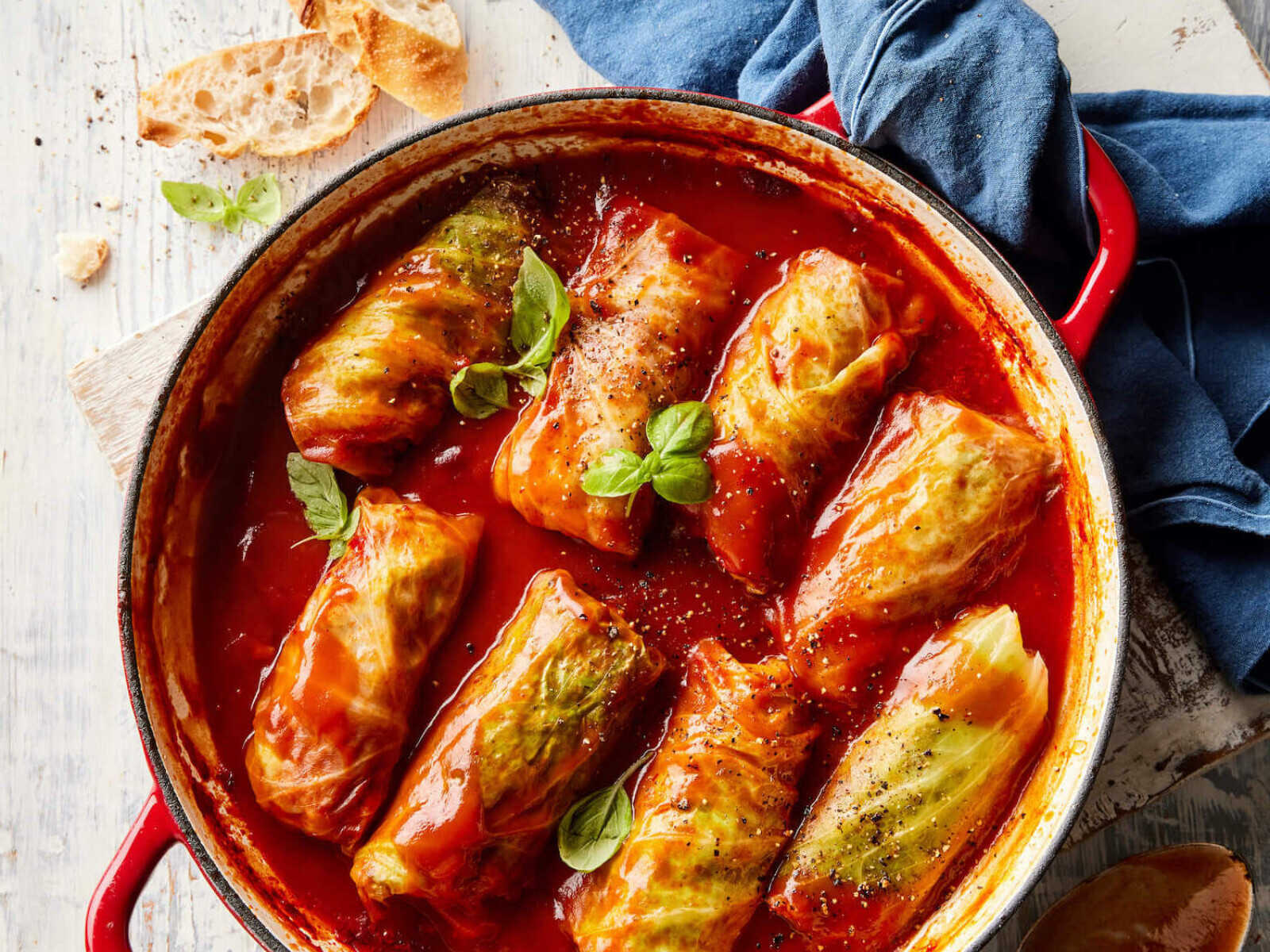
Holishkes, also known as stuffed cabbage rolls, are a beloved dish in Jewish cuisine, especially during Sukkot and Simchat Torah. These delicious rolls are made by wrapping a savory mixture of ground meat, rice, and spices in cabbage leaves, then simmering them in a rich tomato sauce. Holishkes have a long history and are enjoyed by many cultures around the world. But what makes them so special? Holishkes symbolize prosperity and abundance, making them a meaningful addition to festive meals. Whether you're a seasoned cook or new to this dish, these 35 facts will deepen your appreciation for Holishkes and perhaps inspire you to try making them yourself.
What are Holishkes?
Holishkes, also known as stuffed cabbage rolls, are a traditional dish enjoyed by many cultures. These delicious rolls are typically filled with a mixture of meat and rice, then wrapped in cabbage leaves and cooked in a savory tomato sauce. Let's dive into some fascinating facts about this beloved dish.
- Holishkes are often associated with Jewish cuisine, particularly during the holiday of Sukkot.
- The dish is also popular in Eastern European countries like Poland, Russia, and Hungary.
- In Yiddish, holishkes are sometimes called "golubtsy," which means "little pigeons."
- The name "holishkes" is derived from the Hebrew word "holish," meaning "to roll."
- Traditionally, holishkes are served hot, but they can also be enjoyed cold.
- The tomato sauce used in holishkes often includes a touch of sweetness, such as sugar or raisins.
- Some variations of holishkes use sauerkraut instead of fresh cabbage leaves.
- Holishkes can be made with a variety of fillings, including beef, pork, lamb, or a vegetarian mixture.
- The dish is often prepared in large batches, making it perfect for family gatherings and celebrations.
- Holishkes are sometimes referred to as "Jewish soul food" due to their comforting and hearty nature.
The History of Holishkes
Understanding the history of holishkes gives us a deeper appreciation for this timeless dish. Here are some historical tidbits that highlight its journey through time.
- Holishkes have been enjoyed for centuries, with roots tracing back to ancient Jewish communities.
- The dish became popular in Eastern Europe during the 19th century.
- Jewish immigrants brought holishkes to America, where it became a staple in Jewish-American cuisine.
- In Poland, holishkes are known as "gołąbki," which translates to "little pigeons."
- Russian Jews refer to the dish as "golubtsy," similar to the Yiddish term.
- In Hungary, holishkes are called "töltött káposzta," meaning "stuffed cabbage."
- The dish is often associated with Ashkenazi Jewish traditions.
- Holishkes are typically served during Sukkot to symbolize the harvest and abundance.
- The dish is also enjoyed during Simchat Torah, marking the end of the annual Torah reading cycle.
- Holishkes have evolved over time, with each culture adding its unique twist to the recipe.
How to Make Holishkes
Making holishkes can be a labor of love, but the end result is well worth the effort. Here are some interesting facts about the preparation process.
- The cabbage leaves must be softened before rolling, usually by boiling or freezing.
- The filling typically includes ground meat, rice, onions, and spices.
- Some recipes call for adding eggs to the filling to help bind the ingredients.
- The rolls are tightly packed in a pot to prevent them from unraveling during cooking.
- Holishkes are simmered in a tomato-based sauce, often for several hours.
- The sauce can be made with fresh tomatoes, canned tomatoes, or tomato paste.
- Some cooks add a splash of vinegar or lemon juice to the sauce for a tangy flavor.
- Holishkes can be cooked on the stovetop, in the oven, or in a slow cooker.
- Leftover holishkes can be frozen and reheated for later enjoyment.
- The dish is often garnished with fresh herbs, such as dill or parsley, before serving.
Fun Facts About Holishkes
Beyond their delicious taste and rich history, holishkes have some fun and quirky aspects worth mentioning.
- Holishkes are sometimes called "Jewish burritos" due to their rolled shape and hearty filling.
- The dish is featured in many Jewish cookbooks and food blogs.
- Holishkes are often served with a side of mashed potatoes or bread to soak up the sauce.
- Some families have secret recipes for holishkes that have been passed down for generations.
- Holishkes are a popular dish at Jewish delis and restaurants around the world.
Holishkes: A Tasty Tradition
Holishkes, or stuffed cabbage rolls, are more than just a meal. They’re a delicious slice of history. Originating from Eastern Europe, these rolls have found their way into many kitchens worldwide. Packed with a mix of meat, rice, and spices, then wrapped in cabbage leaves, they offer a hearty, comforting bite. Whether served with a tangy tomato sauce or a sweet and sour twist, they never fail to impress.
Making holishkes can be a bit of a project, but the result is worth every minute. They’re perfect for family gatherings, holidays, or just a cozy dinner at home. Plus, they freeze well, so you can enjoy them anytime. So next time you’re looking for a dish that’s both flavorful and steeped in tradition, give holishkes a try. Your taste buds will thank you!
Was this page helpful?
Our commitment to delivering trustworthy and engaging content is at the heart of what we do. Each fact on our site is contributed by real users like you, bringing a wealth of diverse insights and information. To ensure the highest standards of accuracy and reliability, our dedicated editors meticulously review each submission. This process guarantees that the facts we share are not only fascinating but also credible. Trust in our commitment to quality and authenticity as you explore and learn with us.
